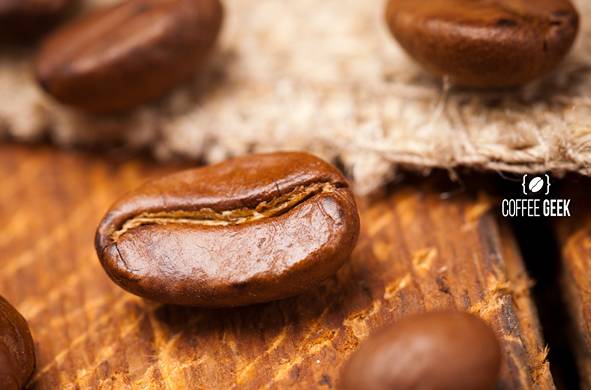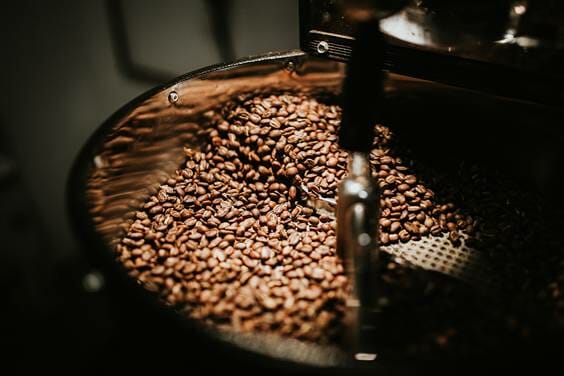As a coffee enthusiast, I’ve often wondered why instant coffee sometimes tastes inferior to its freshly brewed counterpart.
After some research, I’ve discovered that there are several factors that can contribute to this less-than-stellar taste of brew coffee.
In this article, I’ll discuss some of the primary reasons why instant coffee may taste bad, and what can be done to improve its flavor.
One of the main reasons why does instant coffee taste bad could be the use of poor-quality coffee beans or stale coffee grounds.
Additionally, the process used to make instant coffee may not always be ideal, which can impact the final reason why instant coffee taste bad.
These factors combined may result in a disappointing cup of instant coffee, leaving many of us longing for a fresh and flavorful alternative.
Factors Affecting Instant Coffee Taste
Quality of Coffee Beans
In my experience, the quality of coffee beans plays a significant role in determining the taste of instant coffee.
Generally, instant coffee is made from lower-quality beans, which can impact the overall flavor.
For instance, robusta beans are often used for instant coffee production due to their lower cost and higher caffeine content.
However, they usually have a more bitter taste compared to the smoother and more flavorful arabica beans.
Roasting Process
The roasting process is another factor that affects the taste of instant coffee.
Typically, coffee beans are roasted at high temperatures to develop their flavor and aroma.
However, in the case of instant coffee, the beans may be roasted differently or even over-roasted to ensure a longer shelf life.
This can, unfortunately, result in a burnt or bitter taste.
Grind Size
Grind size also plays a role in the taste of instant coffee. Generally, ground coffee used for instant coffee is very fine or even powdered, which can affect the extraction process.
For example, a finer grind can sometimes lead to over-extraction, producing a bitter or sour taste.
On the other hand, using coarsely ground coffee can result in under-extraction, creating a weak and sour taste.
In instant coffee, finding the perfect grind size can be a challenge, as the goal is to produce a quick and easy cup of coffee.
Check out which is the best coffee grind size for your brew here.

Type of Beans
As I mentioned earlier, the type of beans used in making instant coffee can greatly impact its taste.
While robusta coffee beans are commonly used in instant coffee production, they tend to produce a stronger and more bitter taste.
Arabica beans, which are considered higher quality and more flavorful, are less commonly used make instant coffee taste due to their higher cost.
However, some instant coffee brands are now offering blends that include arabica beans, which can help enhance the overall taste.
See this article on Arabica vs Robusta here.

Instant Coffee Production Methods
In this section, I want to discuss the main methods used in the production of instant coffee: the freeze-drying process and the spray-drying process.
Freeze-Drying Process
Personally, I find the freeze-drying process quite interesting. First, the coffee extract is rapidly frozen at extremely low temperatures. This helps preserve the coffee’s aroma and flavor.
The frozen coffee is then placed in a vacuum chamber, where the water is removed through a process called sublimation, which turns the frozen water directly into vapor without passing through the liquid state.
Finally, the freeze-dried coffee granules are collected and packaged for consumption.
The freeze-drying process maintains many of the coffee’s original properties, such as aroma and taste.
However, it is a more expensive method than spray-drying, which is why freeze-dried instant coffee tends to be more costly.
Spray-Drying Process
On the other hand, the spray-drying process is the most common method used in the production of instant coffee.
In this process, the coffee extract is sprayed in a fine mist into a hot air chamber, which quickly evaporates the water, leaving behind the coffee powder.
This high temperature and sudden exposure to heat can alter the coffee’s natural taste and result in a more bitter and burnt flavor.
The spray-dried coffee may also lose some of its original aroma because of the evaporation process.
In conclusion, the production methods used for instant coffee can affect its taste and quality.
While the freeze-drying process can preserve the original instant coffee taste good, and aroma, it is more expensive.
The spray-drying method is cheaper and more common, but may result in a less appealing taste and aroma.
When it comes to instant coffee, the production process can make all the difference.
Taste Comparison between Instant and Regular Coffee
Aroma
When it comes to aroma, I can easily notice the difference between instant coffees and regular coffee.
Instant coffee often lacks the rich and complex aroma that I experience with freshly brewed coffee.
This could be due to the production process of instant coffee, which involves soaking and dehydrating the beans at high temperatures, ultimately altering the natural coffee aroma.
Flavor Profile
As for the flavor profile, I’ve observed that instant coffee tastes seem to be quite different from its freshly brewed counterpart.
A regular cup of brewed coffee uses fresh ground coffee beans, which often results in a more full-bodied and diverse flavor.
In contrast, instant coffee might be produced from lower quality beans, which can lead to a poorer tasting coffee.
Bitterness
The bitterness in coffee is noticeable in both instant and freshly brewing coffee variants.
However, I find that instant coffee tends to have a more pronounced bitter taste.
This could be attributed to the fact that instant coffee is brewed at a high-strength level, which extracts more bitterness from the coffee grounds.
Burnt Taste
When I drink instant coffee, I sometimes get a burnt taste in my mouth, which isn’t present in freshly brewed coffee.
This burnt taste may be a result of the high temperatures used during the production of instant coffee, altering the coffee’s natural flavors.
Additionally, if the coffee beans used for instant coffee are not roasted properly, it could also lead to a burnt coffee taste.
In conclusion, there are substantial differences in the aroma, flavor profile, bitterness, and burnt taste between instant and regular coffee.
While both instant and regular coffee offer the convenience of a quick caffeine fix, the taste experience of a freshly brewed cup of coffee made from fresh ground beans is hard to beat.
How to Improve Instant Coffee Taste
Using Quality Water
One thing that has really helped me improve the taste of my instant coffee is using quality water.
By using filtered water or even bottled water instead of tap water, I noticed a considerable difference in flavor.
Additionally, dissolving the instant coffee granules in cold water first, then adding hot water, has made my instant coffee taste better smoother and less powdery.
Adding Flavor Enhancers
To elevate the taste of my instant coffee, I experimented with adding flavor enhancers like cream, sugar, cinnamon, and even butter.
The cream can help mask any bitterness, while a pinch of cinnamon adds a delightful warmth to the drink.
I’ve also tried adding different sweeteners, such as honey or coconut sugar, depending on my taste buds that day.
Trying Different Brands and Preparation Methods
I found that not all instant coffee brands are created equal. For instance, I discovered that Starbucks Via has a richer taste than some other brands.
It’s worth trying different brands to find one that suits your taste preferences.
Another tip to enhance the coffee flavor of your instant coffee is to prepare it with steamed or frothed milk instead of boiling water.
This creates a creamier and smoother coffee that might remind you more of an espresso. You can even try using hot milk instead of water.
I hope my personal experiences with improving instant coffee taste will give you, coffee lovers, some ideas for your own coffee journey.
Remember, it’s all about experimentation and finding what is best instant coffee for you!
Health and Environmental Aspects
Health Benefits and Risks
Instant coffee may not taste as good as regular coffee, but it does have some health benefits.
Similar to regular coffee, instant coffee contains antioxidants that may improve overall health and reduce the risk of chronic diseases.
However, instant coffee contains lower amounts of these antioxidants compared to freshly brewed coffee.
In addition, the process of turning coffee into instant granules can lead to the formation of a harmful compound called acrylamide.
I learned that acrylamide levels are generally higher in instant coffee compared to regular coffee.
This compound is associated with a range of health risks like cancer and neurological damage when consumed in large quantities.
When instant coffee sits on the shelf, it can also become stale and subject to oxidation. This affects not only the taste but also the health benefits.
Decaf instant coffee often has a better shelf life, but it may not provide the same metabolism-boosting benefits as its caffeinated counterpart.
One more thing to consider is that instant coffee can have poor-quality beans, which affects the final product.
So, it’s important to look for a reputable coffee brand to ensure I’m getting a healthier option.
Sustainability
Sustainability is a concern when it comes to producing instant coffee.
In many cases, this process can be more resource-intensive than regular coffee production, leading to increased energy consumption, waste products, and water usage.
Ideally, I would look for a instant coffee brand that focuses on sustainable practices and eco-friendly packaging.
Market Trends
Market trends show that instant coffee remains popular worldwide, especially for its convenience and affordability.
However, environmental concerns and an increasing focus on quality have led to rising demand for sustainable and higher-quality coffee options.
As a result, many companies are working to improve not only the taste but also the environmental impact of their instant coffee products.
Conclusion and Personal Preference
As a coffee enthusiast, I can definitely taste the difference between freshly brewed coffee and instant coffee.
Instant coffee often lacks the rich flavor and aroma that I enjoy in a fresh cup.
One of the main reasons behind this is that instant coffee is not fresh; it has already been roasted, ground, and dehydrated prior to being sold.
Some instant coffee brands like Waka Coffee and Starbucks VIA Instant Coffee claim to offer better tasting options, but there’s no substitute for the experience of grinding and brewing fresh coffee beans.
Brewing temperature, water quality, and even degassing all contribute to the flavor of fresh coffee.
In my experience, I also found that some instant coffee has a plastic-like taste, which might be caused by their packaging (coffee mug) or the brewing process itself.
That being said, I understand that instant coffee offers convenience and a quick caffeine fix for those who don’t have the time or equipment to make fresh coffee.
Keurig machines aim to solve this problem, but I’ve noticed a significant difference in taste compared to traditional brewing methods.
In the end, my personal preference leans heavily towards freshly brewed coffee due to its richer flavor and aroma.
However, I can appreciate the convenience of instant coffee and understand that others might have different tastes.
If you’re interested in improving the taste of instant coffee, you might consider experimenting with water quality and brewing temperature or exploring different brands to find one that suits your palate.
Why Does Instant Coffee Taste Bad FAQs
What makes instant coffee taste bitter?
Instant coffee can taste bitter due to poor-quality beans, stale coffee grounds, or even poorly roasted beans. The production process of instant coffee also involves drying the coffee extract, which may lead to a loss of some of the natural flavors found in freshly brewed coffee.
How can I improve the taste of instant coffee?
I have discovered several ways to improve the taste of instant coffee. Some of the techniques include adding steamed or frothed milk, diluting with cold water, using the correct water temperature, and adding some sugar.
What is the difference between instant coffee and brewed coffee?
The main difference between instant coffee and brewed coffee is the preparation process. Instant coffee is made from dried coffee extract, while brewed coffee is made by brewing fresh ground coffee beans with hot water. The aroma, flavor, and overall experience of drinking brewed coffee is usually superior to instant coffee.
Is there a high-quality instant coffee that tastes good?
While instant coffee may never truly compare to a freshly brewed cup, some brands do offer better-tasting options. The quality of the beans and the production process can affect the flavor of instant coffee. My best advice would be trying different brands and types to find one that suits your taste preferences.
How does the production process affect instant coffee taste?
The production process of instant coffee involves extracting flavors from coffee beans, then drying and concentrating the extract into granules or powder. This process can lead to a loss of some of the natural flavors and aromas found in fresh coffee.ere.
What factors influence the taste of different instant coffee brands?
Various factors can influence the taste of instant coffee, such as bean quality, processing techniques, and the type of roast. Each brand may have its unique approach, leading to slightly different flavors. To identify the best instant coffee made that suits your taste, you may wish to try different brands and flavors.




